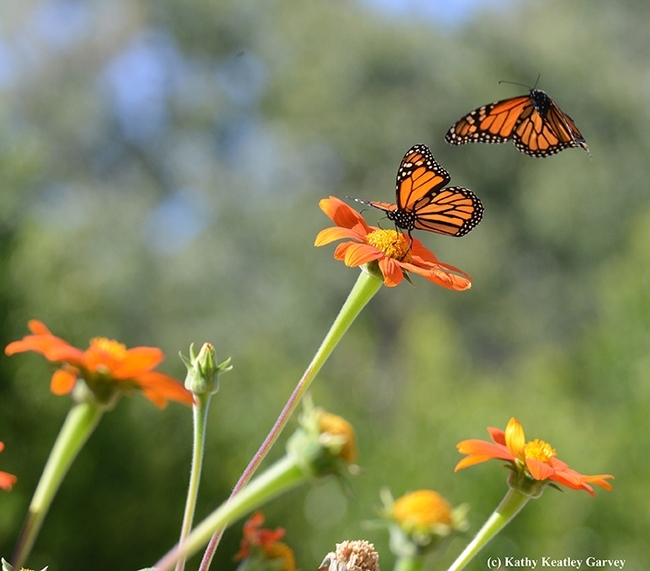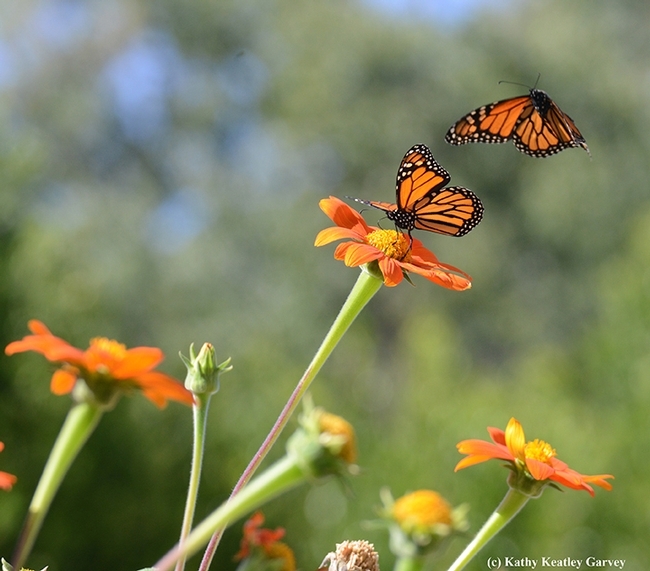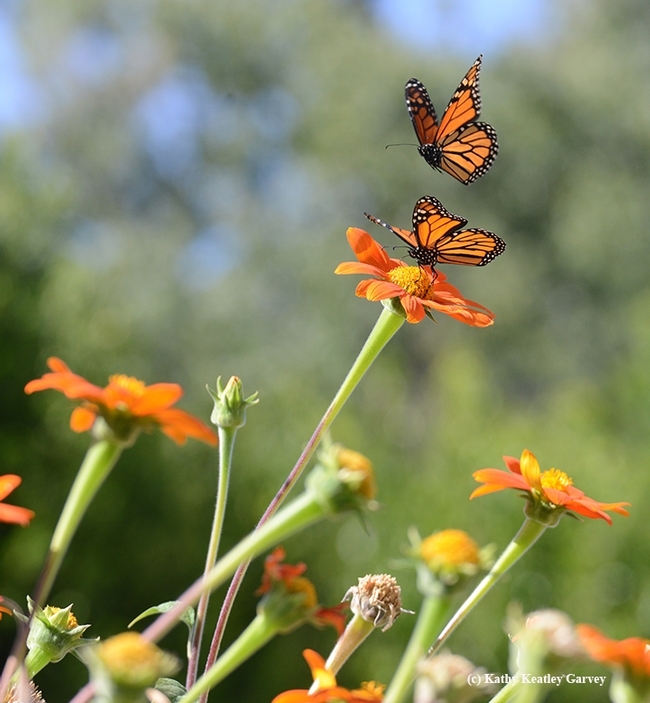
It's early spring and Western monarchs are heading inland from their overwintering sites along the California coast.
Have you seen any monarchs?
A group of monarch researchers from Washington State University, Tufts University, University of California at Santa Cruz, and the Xerces Society for Invertebrate Conservation seek your participation in the Western Monarch Mystery Challenge to help gain insight as to where the monarchs go. They want to fill "a critical gap in knowledge about habitat needs of migrating monarchs in the spring."
“We are very excited to see so many western monarchs on the coast this winter!" said conservation biologist and lead researcher Cheryl Schultz, a professor in Washington State University's School of Biological Sciences, in noting that the 2021 Thanksgiving count directed by the Xerces Society of Invertebrate Conservation totaled 247,237, a 100-fold increase from the less than 2000 monarchs recorded in 2020. "Monarchs are resilient. Because the numbers are up this year, it is a fabulous opportunity to learn where they go when they leave the coast as they head to breeding areas."
The challenge, launched Feb. 14 and to end April 22 (Earth Day), is a call to action: If you see a monarch, report the sighting, take an image (a cell phone photo is fine) and enter it the campaign for a chance at a prize.

While on sabbatical at UC Davis, Crone presented a seminar Jan. 29, 2020 to the Department of Entomology and Nematology on "Why Are Monarchs Declining in the West?"
“Surprisingly, we don't really know where western monarch butterflies are during this time period, roughly mid-February through mid-May," Crone told the UC Davis crowd. "Future research will focus on filling this knowledge gap, as well as building quantitative knowledge of the western monarch demography throughout their complex annual life cycle, which is needed to understand the relative contributions of habitat at different points in the life cycle to population declines and recovery.”
Crone related that what fascinates her about monarchs is "the possibility that we can recover the western monarch population from its recent steep decline to being abundant again. This should be a problem we can fix."
The Western Monarch Mystery Challenge "is an opportunity to get even more people to participate in western monarch community science–and these animals need our help right now, more than ever," said conservation biologist Emma Pelton of the Xerces Society.
"We know they spend winter months (November to February) in groves along the California Coast, and start breeding in central California in May," the group of researchers wrote in an email. "However, we know little about where monarchs are in March and April. Solving the mystery of where western monarchs spend the spring is central to conserving and restoring the phenomenon of monarch migration in the West."
The call to action, they said, is simple:
- If you see a monarch outside the overwintering groves, take a picture (don't worry, it can be blurry). We suspect that monarchs spend the spring somewhere between the coast and the Central Valley
- Report it to iNaturalist (the app is free) OR email it to monarchmystery@wsu.edu and include species, date and location
- Be automatically entered to win a variety of prizes every week you report a sighting. Be sure to check your messages on iNaturalist if you use the app to submit sightings. If you upload a monarch photo from outside the overwintering sites (and not any from monarch rearing projects as these "skew the data and could jeopardize the quality and legitimacy of conservation plans) you will automatically be entered in a weekly prize drawing. Prizes include gift cards to REI and other awards. More information is available at https://labs.wsu.edu/conservation-biology/western-monarch-mystery-challenge/
To stay updated, follow the Western Monarch Mystery Challenge on Twitter, Facebook, and Instagram.
The Western Monarch Mystery Challenge is supported by the Monarch Joint Venture in collaboration with the Western Association of Fish and Wildlife Agencies, as part of its Western Monarch Conservation Plan, 2019-2069, a regional program to restore and recover monarch butterflies across the Western landscape.
Attached Images:

First in a series of photos taken in 2016: Two monarchs meet in a Tithonia patch in Vacaville, Calif. (Photo by Kathy Keatley Garvey)

Second in a series of photos taken in 2016: One monarch is nectaring and the other investigating. (Photo by Kathy Keatley Garvey)

Third in a series of photos taken in 2016: Two monarchs interacting in a Tithonia patch. (Photo by Kathy Keatley Garvey)

Fourth in a series of photos taken in 2016: The two monarchs take flight. (Photo by Kathy Keatley Garvey)

This map shows the area where monarch sightings should be reported in the Western Monarch Mystery Challenge.